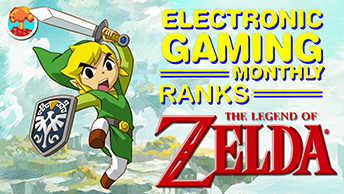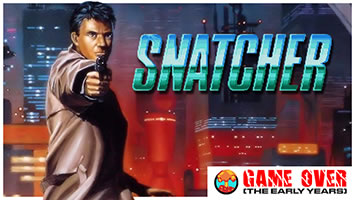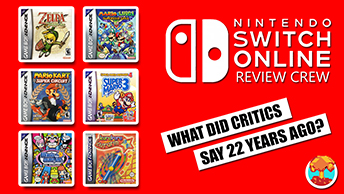- CLASSIC MAGAZINES
- REVIEW CREW
A show recapping what critics thought back
when classic games first came out! - NEXT GENERATION'S BEST & WORST
From the worst 1-star reviews to the best
5-stars can offer, this is Next Generation! - NINTENDO POWER (ARCHIVE)
Experience a variety of shows looking at the
often baffling history of Nintendo Power! - MAGAZINE RETROSPECTIVE
We're looking at the absolutely true history of
some of the most iconic game magazines ever! - SUPER PLAY'S TOP 600
The longest and most ambitious Super NES
countdown on the internet! - THEY SAID WHAT?
Debunking predictions and gossip found
in classic video game magazines! - NEXT GENERATION UNCOVERED
Cyril is back in this spin-off series, featuring the
cover critic review the art of Next Generation! - HARDCORE GAMER MAGAZING (PDF ISSUES)
Download all 36 issues of Hardcore Gamer
Magazine and relive the fun in PDF form!
- REVIEW CREW
- ELECTRONIC GAMING MONTHLY
- ELECTRONIC GAMING MONTHLY RANKS
From Mario to Sonic to Street Fighter, EGM
ranks classic game franchises and consoles! - ELECTRONIC GAMING MONTHLY BEST & WORST
Counting down EGM’s best and worst reviews
going year by year, from 1989 – 2009! - ELECTRONIC GAMING BEST & WORST AWARDS
11-part video series chronicling the ups and
downs of EGM’s Best & Worst Awards!
- ELECTRONIC GAMING MONTHLY RANKS
- GAME HISTORY
- GAME OVER: STORY BREAKDOWNS
Long-running series breaking down game
stories and analyzing their endings! - A BRIEF HISTORY OF GAMING w/ [NAME HERE]
Real history presented in a fun and pithy
format from a variety of game historians! - THE BLACK SHEEP
A series looking back at the black sheep
entries in popular game franchises! - INSTANT EXPERT
Everything you could possibly want to know
about a wide variety of gaming topics! - FREEZE FRAME
When something familiar happens in the games
industry, we're there to take a picture! - I'VE GOT YOUR NUMBER
Learn real video game history through a series
of number-themed episodes, starting at zero! - GREAT MOMENTS IN BAD ACTING
A joyous celebration of some of gaming's
absolute worst voice acting!
- GAME OVER: STORY BREAKDOWNS
- POPULAR SHOWS
- DG NEWS w/ LORNE RISELEY
Newsman Lorne Riseley hosts a regular
series looking at the hottest gaming news! - REVIEW REWIND
Cyril replays a game he reviewed 10+ years
ago to see if he got it right or wrong! - ON-RUNNING FEUDS
Defunct Games' longest-running show, with
editorials, observations and other fun oddities! - DEFUNCT GAMES QUIZ (ARCHIVE)
From online quizzes to game shows, we're
putting your video game knowledge to the test!- QUIZ: ONLINE PASS
Take a weekly quiz to see how well you know
the news and current gaming events! - QUIZ: KNOW THE GAME
One-on-one quiz show where contestants
find out if they actually know classic games! - QUIZ: THE LEADERBOARD
Can you guess the game based on the classic
review? Find out with The Leaderboard!
- QUIZ: ONLINE PASS
- DEFUNCT GAMES VS.
Cyril and the Defunct Games staff isn't afraid
to choose their favorite games and more! - CYRIL READS WORLDS OF POWER
Defunct Games recreates classic game
novelizations through the audio book format!
- DG NEWS w/ LORNE RISELEY
- COMEDY
- GAME EXPECTANCY
How long will your favorite hero live? We crunch
the numbers in this series about dying! - VIDEO GAME ADVICE
Famous game characters answer real personal
advice questions with a humorous slant! - FAKE GAMES: GUERILLA SCRAPBOOK
A long-running series about fake games and
the people who love them (covers included)! - WORST GAME EVER
A contest that attempts to create the worst
video game ever made, complete with covers! - LEVEL 1 STORIES
Literature based on the first stages of some
of your favorite classic video games! - THE COVER CRITIC
One of Defunct Games' earliest shows, Cover
Critic digs up some of the worst box art ever! - COMMERCIAL BREAK
Take a trip through some of the best and
worst video game advertisements of all time! - COMIC BOOK MODS
You've never seen comics like this before.
A curious mix of rewritten video game comics!
- GAME EXPECTANCY
- SERIES ARCHIVE
- NINTENDO SWITCH ONLINE ARCHIVE
A regularly-updated list of every Nintendo
Switch Online release, plus links to review! - PLAYSTATION PLUS CLASSIC ARCHIVE
A comprehensive list of every PlayStation
Plus classic release, including links! - RETRO-BIT PUBLISHING ARCHIVE
A regularly-updated list of every Retro-Bit
game released! - REVIEW MARATHONS w/ ADAM WALLACE
Join critic Adam Wallace as he takes us on a
classic review marathon with different themes!- DEFUNCT GAMES GOLF CLUB
Adam Wallace takes to the links to slice his way
through 72 classic golf game reviews! - 007 IN PIXELS
Adam Wallace takes on the world's greatest spy
as he reviews 15 weeks of James Bond games! - A SALUTE TO VAMPIRES
Adam Wallace is sinking his teeth into a series
covering Castlevania, BloodRayne and more! - CAPCOM'S CURSE
Adam Wallace is celebrating 13 days of Halloween
with a line-up of Capcom's scariest games! - THE FALL OF SUPERMAN
Adam Wallace is a man of steel for playing
some of the absolute worst Superman games! - THE 31 GAMES OF HALLOWEEN
Adam Wallace spends every day of October afraid
as he reviews some of the scariest games ever! - 12 WEEKS OF STAR TREK
Adam Wallace boldly goes where no critic has
gone before in this Star Trek marathon!
- DEFUNCT GAMES GOLF CLUB
- DAYS OF CHRISTMAS (ARCHIVE)
Annual holiday series with themed-episodes
that date all the way back to 2001!- 2015: 30 Ridiculous Retro Rumors
- 2014: 29 Magazines of Christmas
- 2013: 29 Questionable Power-Ups of Christmas
- 2012: 34 Theme Songs of Christmas
- 2011: 32 Game Endings of Christmas
- 2010: 31 Bonus Levels of Christmas
- 2009: 30 Genres of Christmas
- 2008: 29 Controls of Christmas
- 2007: 34 Cliches of Christmas
- 2006: 33 Consoles of Christmas
- 2005: 32 Articles of Christmas
- 2004: 31 Websites of Christmas
- 2003: 29 Issues of Christmas
- 2002: 28 Years of Christmas
- 2001: 33 Days of Christmas
- NINTENDO SWITCH ONLINE ARCHIVE
- REVIEW ARCHIVE
- FULL ARCHIVE
Electronic Gaming Monthly's Top 12 Game Systems of 1992
1991 was a great year to be a gamer. We saw Street Fighter II become a surprise success at the arcade, single-handedly birthing an entire genre of competitive fighting games; the Genesis introduced 16-bit gamers to Sonic the Hedgehog, ToeJam & Earl and the entire cast of Streets of Rage; and, most importantly, the Super NES launched in North America, signaling the official start of one of the greatest system wars of all time. No matter what kind of games you were after, there was a system right for you. But which console reigned supreme? In order to answer that burning question, I decided to flip through the pages of Electronic Gaming Monthly's 1992 Video Game Buyer's Guide, where Steve, Ed and the rest of the Review Crew rated all of 1991's hottest consoles. Join me as I parachute into the front lines of the system war and count down Electronic Gaming Monthly's Top 10 Game Systems of 1991.
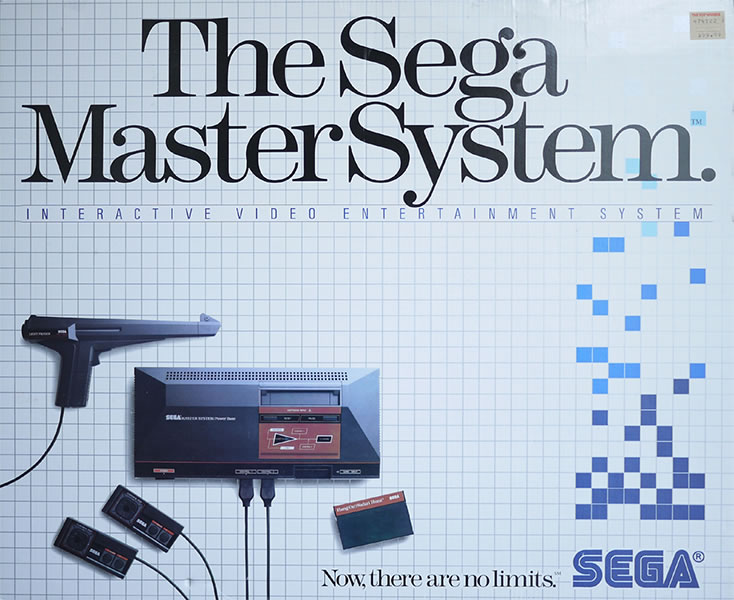
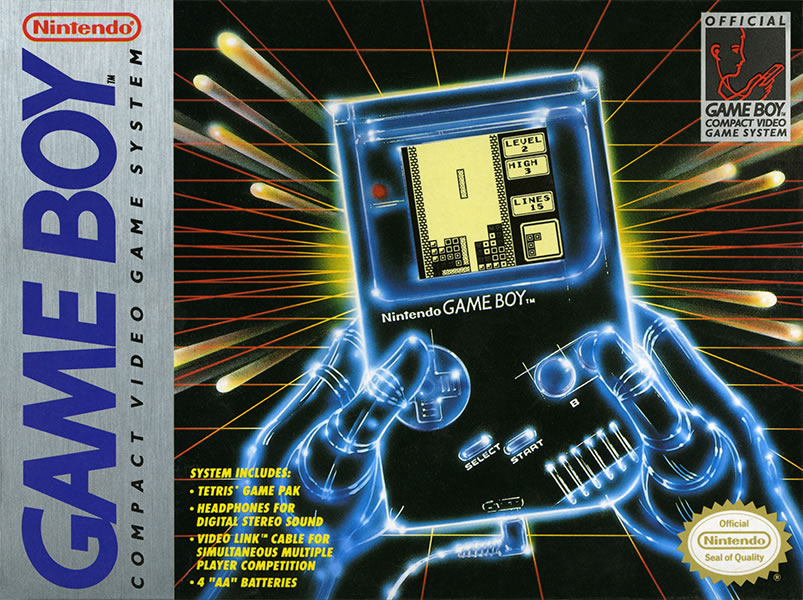
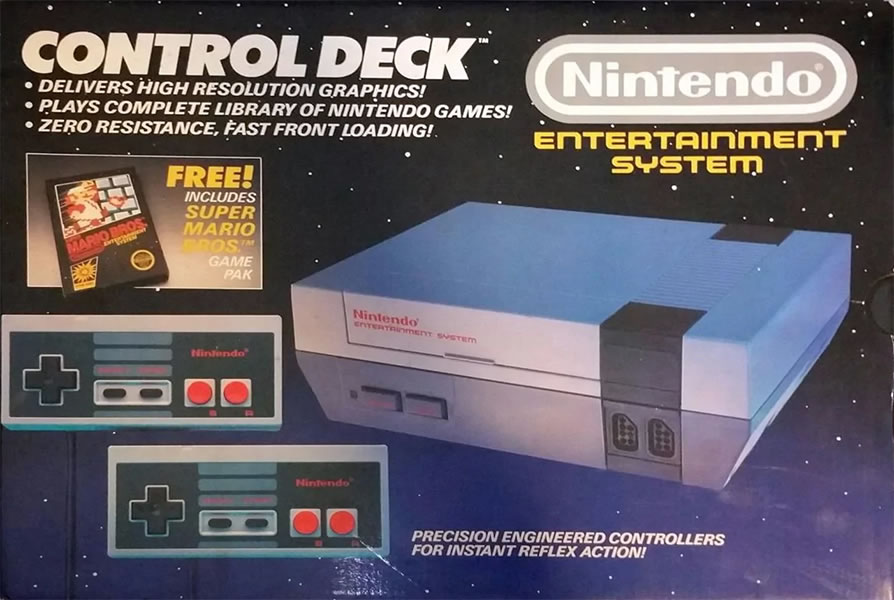
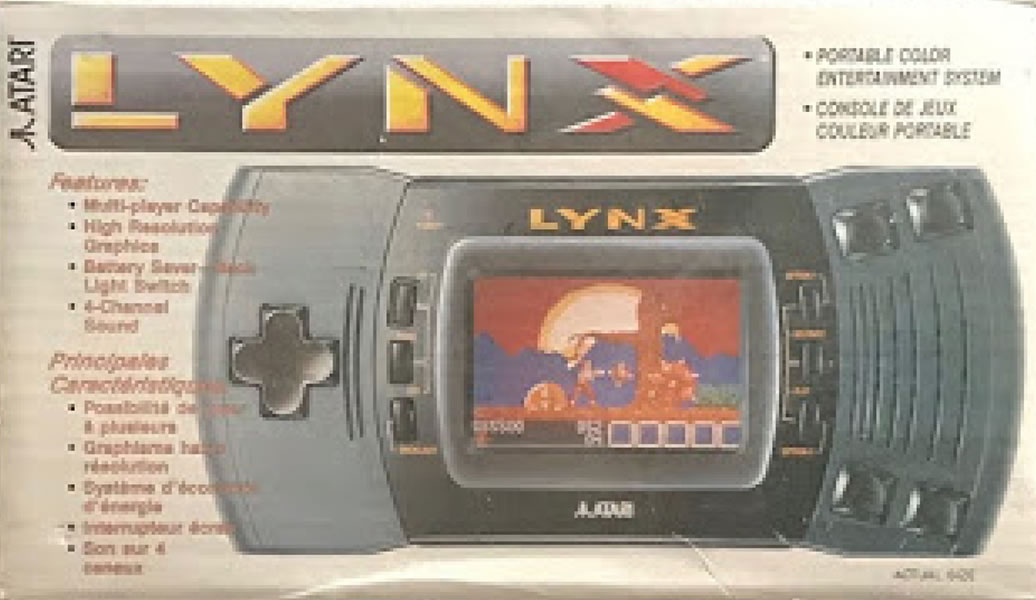
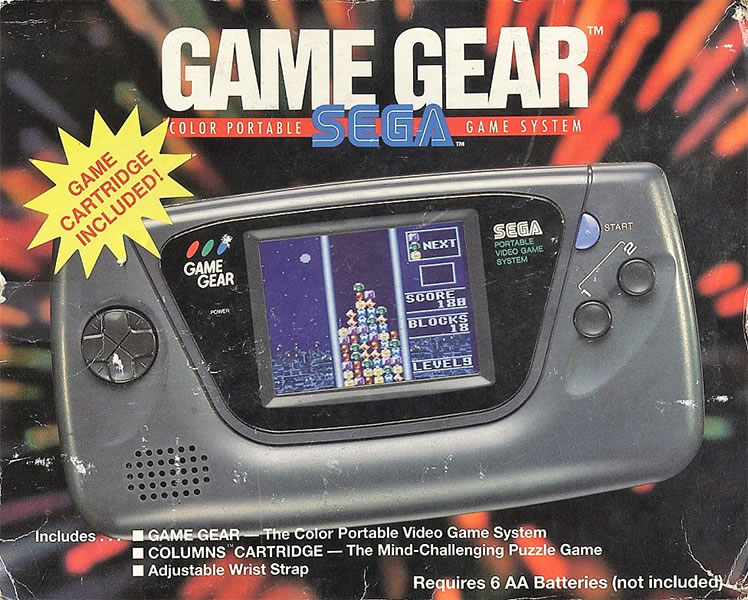
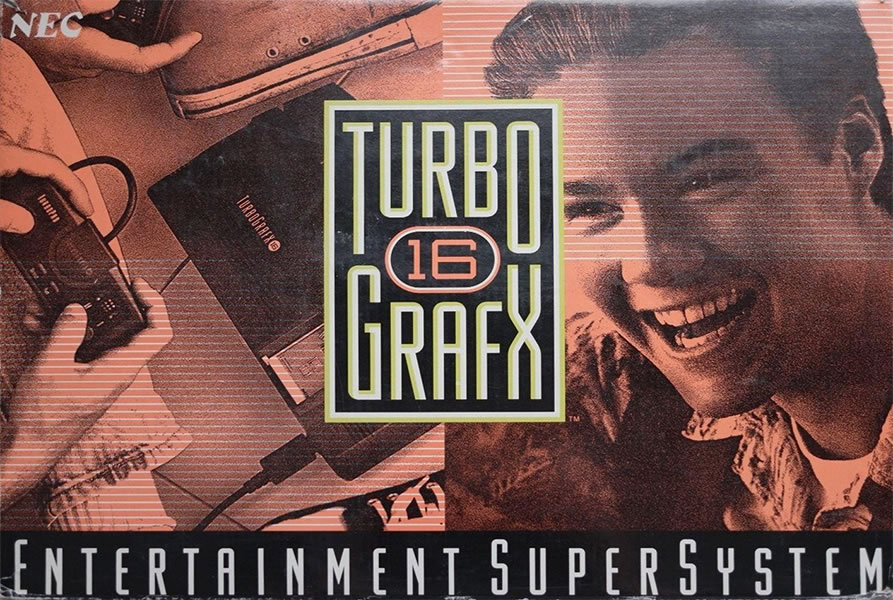
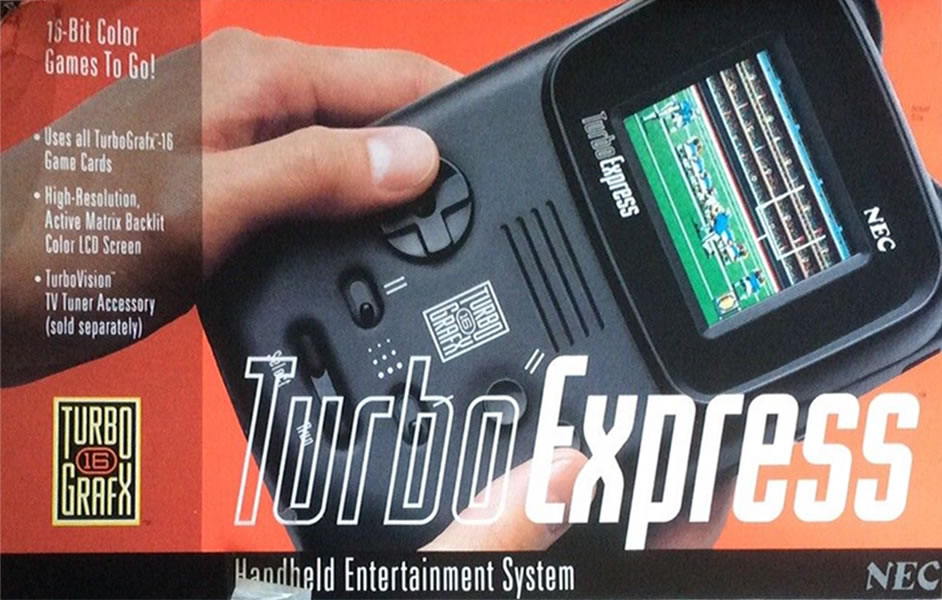
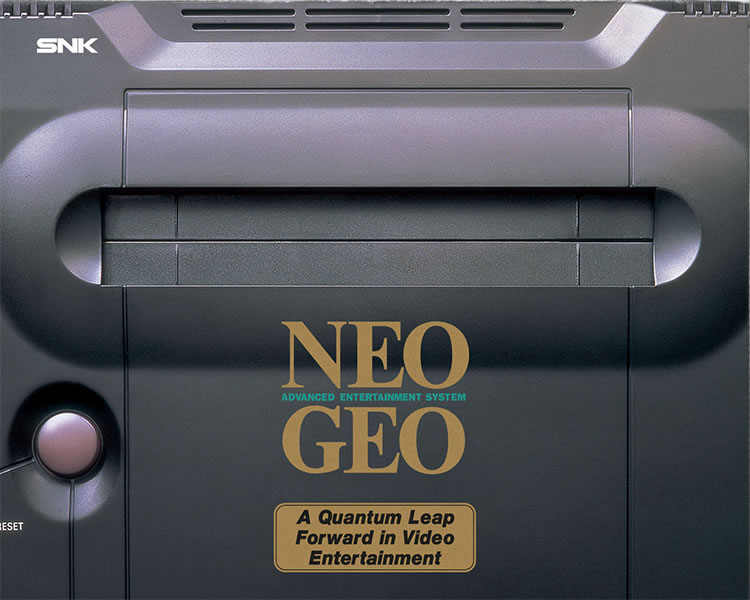
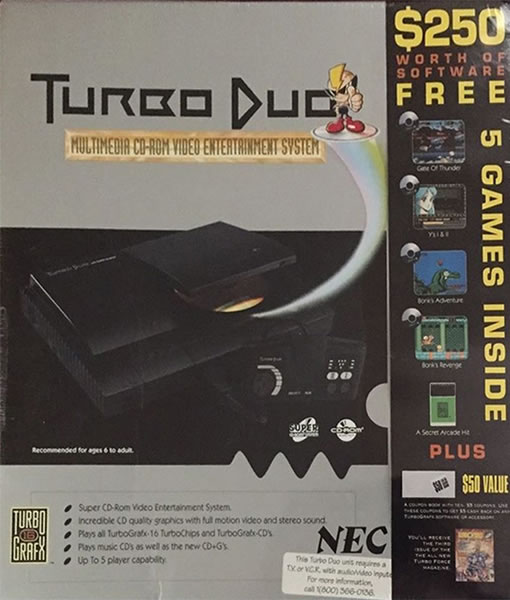
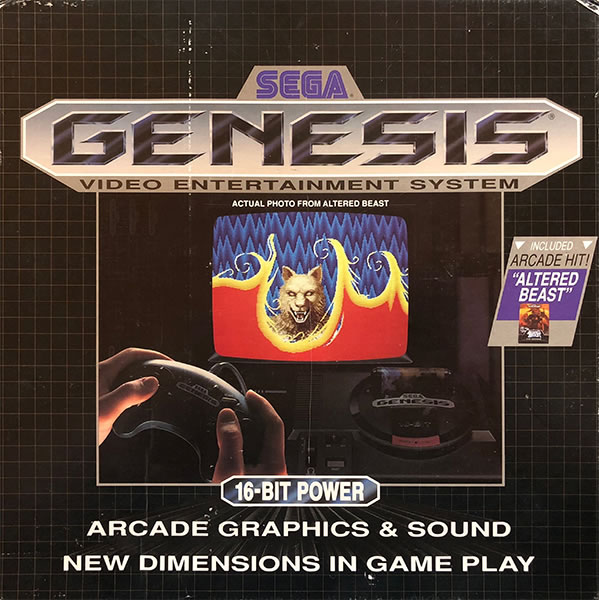
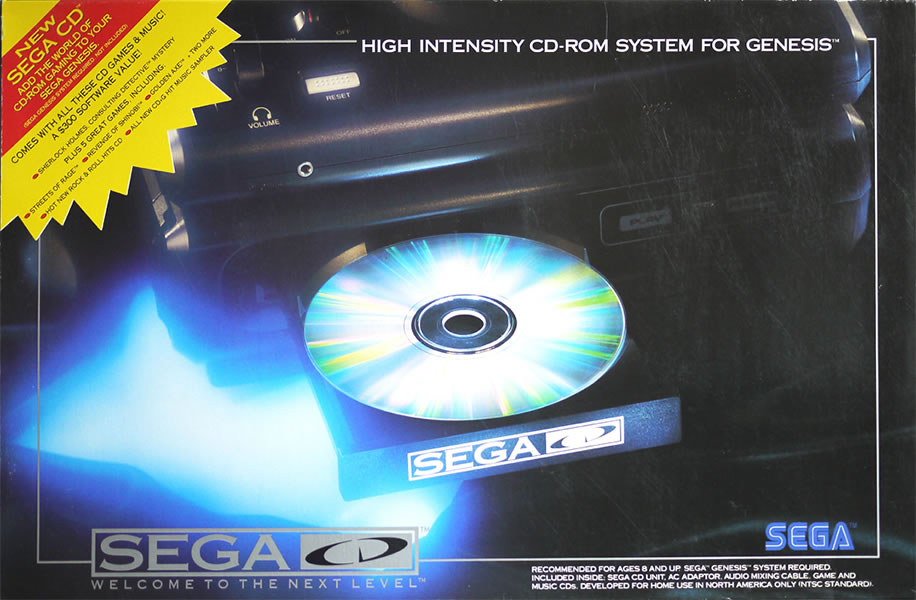
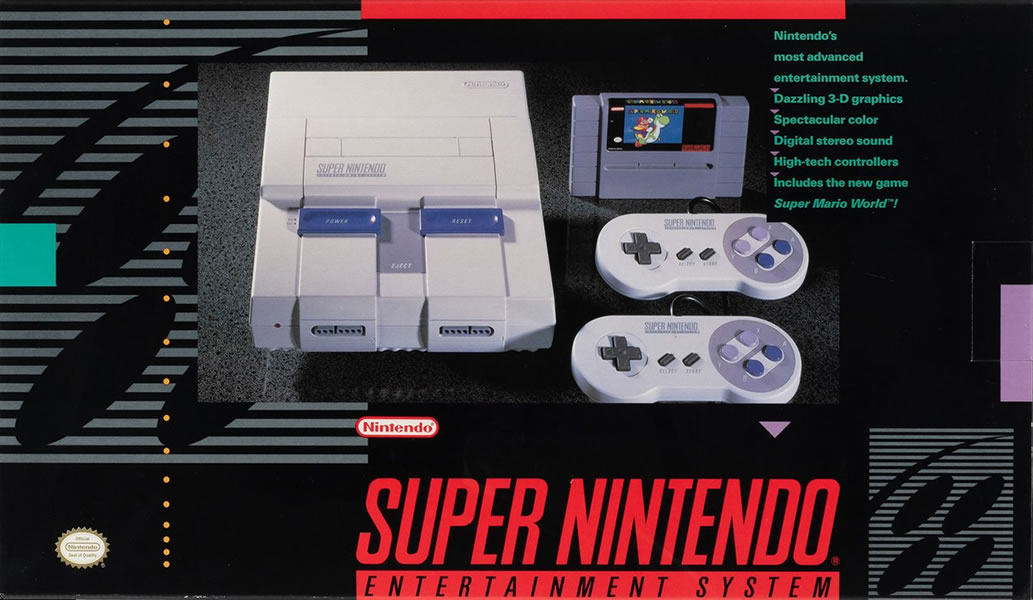

Sega Master System#12After six years and multiple revisions, 1992 was the year when Sega finally gave up on their 8-bit Master System. With the Genesis flying off the shelves and the Sega CD welcoming gamers to the next level, Sega wanted to look forwards, not backwards. And the same went for Electronic Gaming Monthly, which reviewed a total of zero Master System games in all twelve issues of 1992.
With no new games and Sega discontinuing the system, it's easy to see why the Master System was EGM's lowest-rated system of the year. Steve started his review with an important question: “Why are we even talking about this system? Sega isn't supporting it and neither should players.” Ed agreed, using his review to say goodbye to Sega's 8-bitter: “R.I.P. Master System. With no licensees and no support from Sega, there's no way anybody would want to buy a system that has no future. Adios SMS.” Sushi-X gave it a slightly more fitting obituary: “Let's face it, the Master System doesn't have the huge library of games like the NES, and it never will. I'd rather have a Game Gear and a Master System converter.” The Master System may be dead, but thanks to the Game Gear, its legacy will live on ... at least for another year or two. With a score of 2.5 out of 10, the Sega Master System is once again the worst-reviewed system of the year.

Nintendo Game Boy#11Forget the 16-bit system war for a minute, because the real story of the 1990s was how Electronic Gaming Monthly learned to stop hating and possibly even embrace the Game Boy. That's right, slowly but surely, Nintendo's handheld is starting to rub off on the EGM editors, to the point where at least one of the editors might ... gasp ... start recommending people buy it. And given the 1992 line-up, it's easy to see why. This was the year that gave us a phenomenal port of Bionic Command, along with Mega Man III, Batman: Return of the Joker and even Bonk, who was once the TurboGrafx-16's mascot.
With a solid selection of new and old games, the EGM editors were starting to warm-up to Nintendo's black and white handheld. You definitely see that in Steve's review: “Limited? You bet. But the Game Boy can still play a good game. The resolution and overall presentation get mixed reviews, but when the game's good, the machine is a hit.” You also saw Martin's score creep up a bit, with him noting that he “was surprised by the number of cool games this year. Bionic Commando, Mega Man 3 and many more were superb. The blurring still kills this underdog among portables.” Sushi-X, on the other hand, was not ready to stop hating the Game Boy. Giving it a 2 out of 10, he asks a really stupid question: “Why is this system still on the market? It is completely defunct, with about 1 or 2 playable titles per year. A large library of games (which all blur) doesn't save this relic.” To answer his question, the Game Boy is still on the market because people were buying it in droves. When your own magazine is reviewing two dozen Game Boy games in a year, I would say that's a sign that the system isn't, as you say, “defunct.” Sushi's score ultimately brought the average down to a mere 4.25 out of 10.

Nintendo Entertainment System#10With the 16-bit race in full swing and fewer games hitting 8-bit consoles, you might think that the Nintendo Entertainment System was on its last legs. Not so, at least when it came to the games EGM reviewed in 1992. This was the year that gave us Teenage Mutant Ninja Turtles III: The Manhattan Project, Gargoyle's Quest II, Bucky O'Hare and both Mega Man 4 and 5.
With all these heavy hitters, you might expect the trusty old NES to do a little better than a 4.25 out of 10, but it's painfully clear that the EGM's Review Crew is done with the 8-bit generation. Even Sushi-X, who gave the NES the highest score, seems to think the system is dead: “The best thing I can say about the NES is that it has a huge library of software for the money. 8-bit gaming just doesn't compare to rock-solid 16-bit power. R.I.P.” Ed, on the other hand, was shocked by how quickly the 8-bit systems died: “Everybody but the software giants have abandoned the NES for Super NES and with the 16-bitter only $20 more, who cares?” And then there's Martin, who makes a curious argument against the system: “I really can't remember the last time I saw a decent title for this system.” Oh yeah? You recommended all of the games I mentioned at the top, along with several more. I mean, yes, 1992 wasn't the best year ever for the NES, but there were plenty of “decent” games. EGM gave the NES an average score of 4.25 out of 10.

Atari Lynx#9One of the biggest surprises to come out of the first two episodes is EGM's admiration for the Atari Lynx. While they individually doubted the system's longevity and often complained about the game selection, the Lynx has managed to outscore the high-profile handhelds, like the Game Boy and Game Gear. Sadly, time is starting to catch-up to Atari's powerful portable. While 1992 gave us Toki, Rampart, Shadow of the Beast and Hydra, there was a feeling that the software support was beginning to dry up.
With the competition heating up, Electronic Gaming Monthly had a hard time recommending the Lynx. Steve sums it up this way: “Still a system that has plenty of power and no games that use it. The Lynx has made strides in the number of softs available, but the quality remains B+ at best. No standout hits.” Ed gave the system a lower grade, but is still rooting for the surfboard-shaped system: “The Lynx has been slowly gaining popularity. Atari promised a lot of new games, but they are very slow in getting to the store shelves. The system still has potential.” Believe it or not, it's Sushi-X who was the Lynx's biggest supporter. Giving it a 7 out of 10, Sush argued that “the Lynx has a few more titles and a growing number of supporters. The software, with a little more tweaking, could skyrocket the Lynx past the Game Gear in the future.” With scores all over the place, the Lynx averages a middle-of-the-road 5.25 out of 10.

Sega Game Gear#8Oh, what a difference a year makes. When we last checked in with the Game Gear, it was EGM's worst-reviewed system of 1991. However, here we are in 1992 and it's up to number 8. What happened? Believe it or not, there were a few things working in the Game Gear's favor, including a solid software line-up that included Sonic the Hedgehog 2, Alien 3, Chuck Rock and even a Golden Axe spin-off. What's more, this was the year when the Game Gear got the Master System converter, which opened up a whole library of console games at a reasonable price.
Despite all these good things happening to the Game Gear in 1992, EGM was still pessimistic. They may have been warming up a bit to handhelds, but this was happening at the exact same time they were cooling off on 8-bit. Ed sums it up this way: “Sega has been slow to bring out new games but now with Sonic 2 and all the old SMS carts to choose from, this seems to be the system to beat.” Steve went lower, giving it a 4 and arguing that “I'm not impressed with the system, although Sonic on the go is fun.” Believe it or not, it's Sushi-X who was the biggest cheerleader for Sega's handheld. Giving it a 7, he explains that “now that the Game Gear has some cool games and access to most of the Master System titles, the Game Gear has become the portable system of choice.” Talk about an impressive comeback. With an average score of 5.5 out of 10, the Game Gear is the most-improved system of the year.

NEC TurboGrafx-16#7With the Super NES and Genesis taking up all of the oxygen, NEC knew that they needed to make some big moves if they were going to claw their way back into the system war. This resulted in the creation a the TurboDuo, an all-in-one machine that we'll talk about later in this countdown. The big news for TurboGrafx-CD owners is that they could upgrade their machines with the Super System Card, allowing for even more powerful games. This gave the system a jolt of energy right when it needed it the most. But was it enough?
Electronic Gaming Monthly wasn't so sure. Steve sums it up perfectly: “This system scores some points as a valid low-priced machine with new games around the corner and CD-possibilities.” However, if you ask Ed, he would tell you that “the system continues to exist, but barely. The very newest batch of carts are okay, but not great. With heavy emphasis being put on CDs, the base system is hurting.” At this point, Sushi wasn't having it. “TurboWho?” With the passing of NEC in favor of TTI, I'll expect some great thing in the future of the crippled TurboGrafx-16. Until then, the Turbo is on thin ice.” With the attention on the TurboDuo, not even the Super System Card can save the TurboGrafx-16 from a 5.75 out of 10.

NEC TurboExpress#6With the focus turning to the TurboDuo and CD-ROMs, it's easy to see why the TurboExpress lost some ground in 1992. While the system is still scoring better than the three-year-old TurboGrafx-16, we're starting to see its many weaknesses dominate the discussion. And with most of the coolest Turbo games opting for CD over HuCard, this was not a great year for the high-priced handheld.
That said, most of Electronic Gaming Monthly's review crew still felt like the portable was still worth picking up. Martin argues that “the new price makes this high-tech system the most desirable portable out there.” Steve also liked the tech, but what about the games? “As a TV and big ticket machine, this system is a winner – the games, however, aren't up to snuff.” While his score may be low, Sushi-X's review seemed surprisingly optimistic: “With added support of TTI, it may emerge as the victor of the portable wars in 1993.” With an average of 6.5 out of 10, the TurboExpress finds itself in the middle of the pack. Tune in next time to see if Sushi-X's wildly optimistic prediction comes true.

SNK Neo Geo#51992 is what I would like to call a transition year for the Neo Geo. While the first half of the year was dominated by the usual shoot ‘em up and brawler fare, the last half was dominated by fighting games like World Heroes, Art of Fighting and King of the Monsters 2. If you lived through the 1990s, then you already know that SNK would continue to milk the fighting genre throughout the rest of the decade and beyond. 1992 was the last year when you could reasonably argue that the Neo Geo had a well-balanced library.
With the high price point still being an issue, a lot of the 1992 review sound exactly like the ones from the last two years. Giving it a 7 out of 10, Steve called it the “major superpower of game systems,” but argued that it's “plagued with the same high-priced softs that have always limited its market.” Martin agreed on the price, but explains that the real problem is the cost of the games. That said, “incredible games like Fatal Fury and Viewpoint make Neo very tempting.” Sushi-X, on the other hand, is still not buying into the Neo Geo's hype: “All year, I've been treated to high-prices, boring endings and (gasp!) tons of flicker and slow-down! What happened? Where is the supposed 24-bit power? It's a No Go!” Still, with an average score of 6.5 out of 10, the Neo Geo was one of the few systems this year to actually gain some ground. We'll have to see what the hard right turn into fighting games does to the score in 1993.

TTI TurboDuo#4We've talked about the Super System Card and the continued support of the TurboExpress, but NEC's big move in 1992 was to create the brand Turbo Technologies Incorporated and release a new all-in-one console called the TurboDuo. This reasonably priced alternative married the HuCard-loving TurboGrafx with a faster CD-ROM, all in the same box. That's not a bad strategy, especially with Sega releasing their own expensive CD add-on and Nintendo threatening to release one for the Super NES. If nothing else, this gave TTI a chance to have another grand opening, giving the Turbo line-up some much-needed momentum at a time when the system war was quickly getting away from them.
The good news is that the TurboDuo easily outscored the old school TurboGrafx-16. Unfortunately, with most critics giving it a 7 out of 10, this clearly wasn't going to be enough to catch the Genesis or Super NES. Martin sums it up this way: “The Duo is a great way to get the complete Turbo experience in one package.” Ed agrees, but has some concerns about the system's longevity: “TTI has put together a great CD/cart combo system. With plenty of good Japanese CDs to choose from, the Duo should do quite well. The lack of U.S. licensees will hurt it though.” Sushi-X ended up giving the system the lowest score, noting that “it's nothing more than a TurboGrafx with its outdated CD attachment. Hooray!” Although Sushi's review may be drenched in sarcasm, the TurboDuo still managed to average a score of 6.75 out of 10, good enough for a fourth-place finish.

Sega Genesis#3After spending two years in the number 1 position, the Sega Genesis took a bit of a tumble in 1992. Losing one whole point and coming in third, it's clear that the Genesis finally had some real competition. Part of the issue is that the 1992 line-up wasn't as original (or good) as what we saw only one year earlier, with sequels like Sonic the Hedgehog 2, Rolling Thunder 2 and John Madden Football '93 receiving high marks, while Sega's misfires like Greendog and Kid Chameleon failing to impress. It didn't help that Nintendo scored the biggest exclusive of the year – the mega-popular Street Fighter II. And with the release of a CD add-on for the Genesis, it was clear that Sega's attention was split between multiple systems. 1992 was still a good year for Sega, but clearly it was a big step down from 1991.
Despite having a strong line-up, some of the EGM editors were starting to wonder if the Genesis was starting to run out of steam. Take a look at Steve, who called it a “strong machine, especially in the sports department. Nevertheless, the machine is reaching its full potential despite new carts from Konami.” Ed chose not to blame Sega for the drop in score, but rather the third-parties: “This system maintains its strength because of Sonic and the sports games. The licensees haven't come through with lots of hot carts and this has hurt the system's popularity.” Despite some negativity, Martin was still on board: “Still one of the best buys in video gaming. The games don't have the graphics or sound support of the SNES, but still impress me.” With Street Fighter II dominating the discussion in 1992, Sega was right back to playing catch-up with Nintendo. This leaves the Genesis with an average score of 8 out of 10.

Sega CD#2While Nintendo was taking a victory lap over having the only console with Street Fighter II, Sega had their own exclusive to get excited about. I'm talking about the Sega CD, which finally came to America in late 1992, promising games and genres we wouldn't be able to get on the Genesis or Super NES. It was a big deal, with Sega going as far as to create their own multimedia studio in order to create brand-new experiences, instead of simply porting the CD games coming from Japan. While that would prove to be a controversial decision, it was seen at the time as Sega taking the new technology seriously.
Even though EGM only managed to review four Sega CD games in 1992, it was clear that the editors had bought into the potential of the machine. Ed couldn't wait to gush over the add-on, concluding that it's “easily the best system on the market. With dual 16-bit processors, this unit just cruises through the full-motion video scenes in the new games. No access time – cool.” Martin seemed a bit more skeptical, nothing that “at first, this system didn't seem that great. A few of the newer softs are starting to show potential. By next year, the system should be rockin' with all kinds of rad softs.” Sushi-X also liked the system, giving it an 8 and calling it “awesome.” “The Sega CD really packs a powerful punch. Not only does it upgrade the Genesis' capabilities, it starts off (again) with no 16-bit contender to battle.” No competition? I guess we're just going to forget about the TurboDuo? Whatever you say, Sush. With an average score of 8.25 out of 10, the Sega CD starts its life on a high note. Let's see if Sega can maintain that position in 1993.

Super Nintendo Entertainment System#1From Contra III to Super Star Wars to A Link to the Past, there's no doubt that 1992 was a great year for the Super NES. But even with those big hitters, all eyes were on the biggest, most important 16-bit exclusive of them all – Street Fighter II. There's no doubt about it, Street Fighter II was a big get for Nintendo's fledgling 16-bitter, and it's one of the big reasons why the Super NES is sitting at number 1. But it's not the only reason, because Nintendo and their third-parties really delivered in 1992. It was a year packed with Turtles in Time, Smash TV, Mario Kart, Out of this World and even Mario Paint. 1992 was to the Super NES what 1991 was to the Genesis.
Steve sums it up perfectly: “The games are better and the machine has only scratched the surface. With a variety of upgrade chips on the way, and the best titles, this is the system for the ‘90s.” Sushi-X agreed: “All hail the Super NES! It has emerged as THE 16-bit gaming leader now that it has overcome the plague of slowdown. That's not bad for two generations of games.” For as excited as Martin was about 1992, he was even more excited about ... 1994? “Definitely the hottest system around. Incredible sights and sounds with a touch of slowdown. CD in '94!!!” So ... about that Super NES CD in 1994. Well, we'll cross that bridge when we get to it. For now, the Super NES tops the list with an average score of 8.75 out of 10.
HOME |
CONTACT |
NOW HIRING |
WHAT IS DEFUNCT GAMES? |
NINTENDO SWITCH ONLINE |
RETRO-BIT PUBLISHING
Retro-Bit |
Switch Planet |
The Halcyon Show |
Same Name, Different Game |
Dragnix |
Press the Buttons
Game Zone Online | Hardcore Gamer | The Dreamcast Junkyard | Video Game Blogger
Dr Strife | Games For Lunch | Mondo Cool Cast | Boxed Pixels | Sega CD Universe | Gaming Trend
Game Zone Online | Hardcore Gamer | The Dreamcast Junkyard | Video Game Blogger
Dr Strife | Games For Lunch | Mondo Cool Cast | Boxed Pixels | Sega CD Universe | Gaming Trend
Copyright © 2001-2025 Defunct Games
All rights reserved. All trademarks are properties of their respective owners.
All rights reserved. All trademarks are properties of their respective owners.













